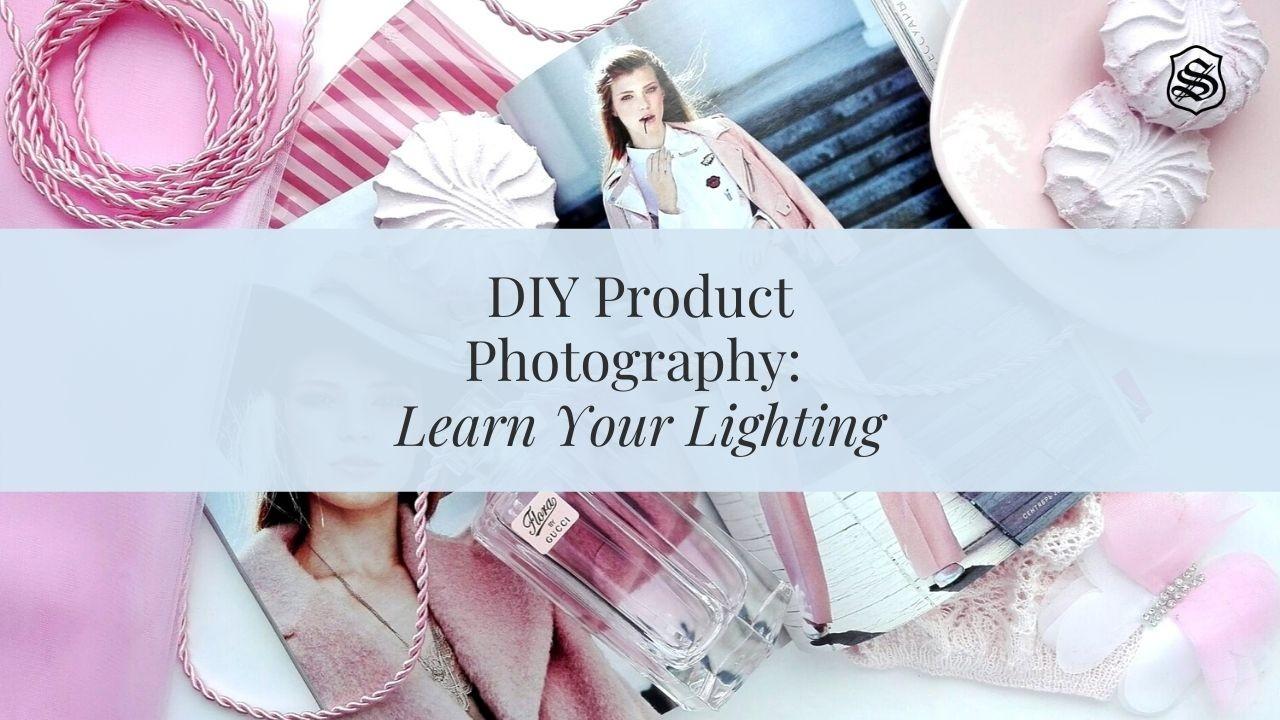DIY Product Photography: Learn Your Lighting

This is a guest blog post written by Amy Eaton, product photographer and founder of Amy Takes Pictures
This post an important one, because I know how many of you struggle with DIY product photography lighting. Lighting is the trickiest element of photography, but something that needs to be understood and mastered to be successful with your product photos.
Let’s get started!
Fun fact: All light is not created equal. First, there are different kinds of light. Diffused, artificial, direct, indirect, natural, etc. Artificial and natural refer to the light sources. Diffused, direct, and indirect refer to how the light hits your products and the effect they cause. We’ll discuss these in a moment. But first, light sources. When it comes to light sources, there are pros and cons of each.
Let’s discuss.
Artificial (flashes, studio lights, lamps)
Pros: Easily controllable, always available
Cons: Can create issues with white balance, costs $$, and involves a learning curve
Natural (from the sun)
Pros: Tends to create accurately color-balanced images, is usually softer than artificial light, you don’t have to work as hard to make it look natural because well, it is.
Cons: You’re at the mercy of time and weather, it needs to be properly diffused, can create unbalanced lighting across the image (ie, darker on one side than the other), and it takes work to perfect.
What’s Right For You
So what’s best? That depends on your situation. If you find yourself only having time to photograph your products after dark, artificial is probably for you. If not, natural light might be for you.
Direct Light vs. Indirect Light vs. Diffused Light
Direct light comes directly from the source to hit your product at full strength. It creates strong highlights and harsh shadows on your images. It’s not recommend in almost all situations when it comes to product photography.
Indirect light is light that is bounced off of other things and then hits your product. Photographing inside or in the shade is indirect light.
Diffused light is light that is filtered through something translucent and breaks up the light rays. Using a lightbox is an example of diffused light.
The kind of light you’re going for is indirect or diffused.
Direct light = bad
Indirect or diffused light = good
Indirect light can be strengthened in an area by adding white foam boards, pictured below. White foam boards can also bounce light back towards your product, reducing shadowing and evening out the overall lighting in the image.
Below is an example of indirect light.
The light is coming from the sun (natural light), and is being bounced off of the surroundings and more intentionally with the white foam board.

Below is an example of diffused light.
The light (both natural and artificial) is being filtered through the translucent material of the lightbox, breaking down the light rays and causing them to cascade over the scene with soft, even light.

Now that you know what kinds of light you can use for your product photos, what lighting is right for you?







